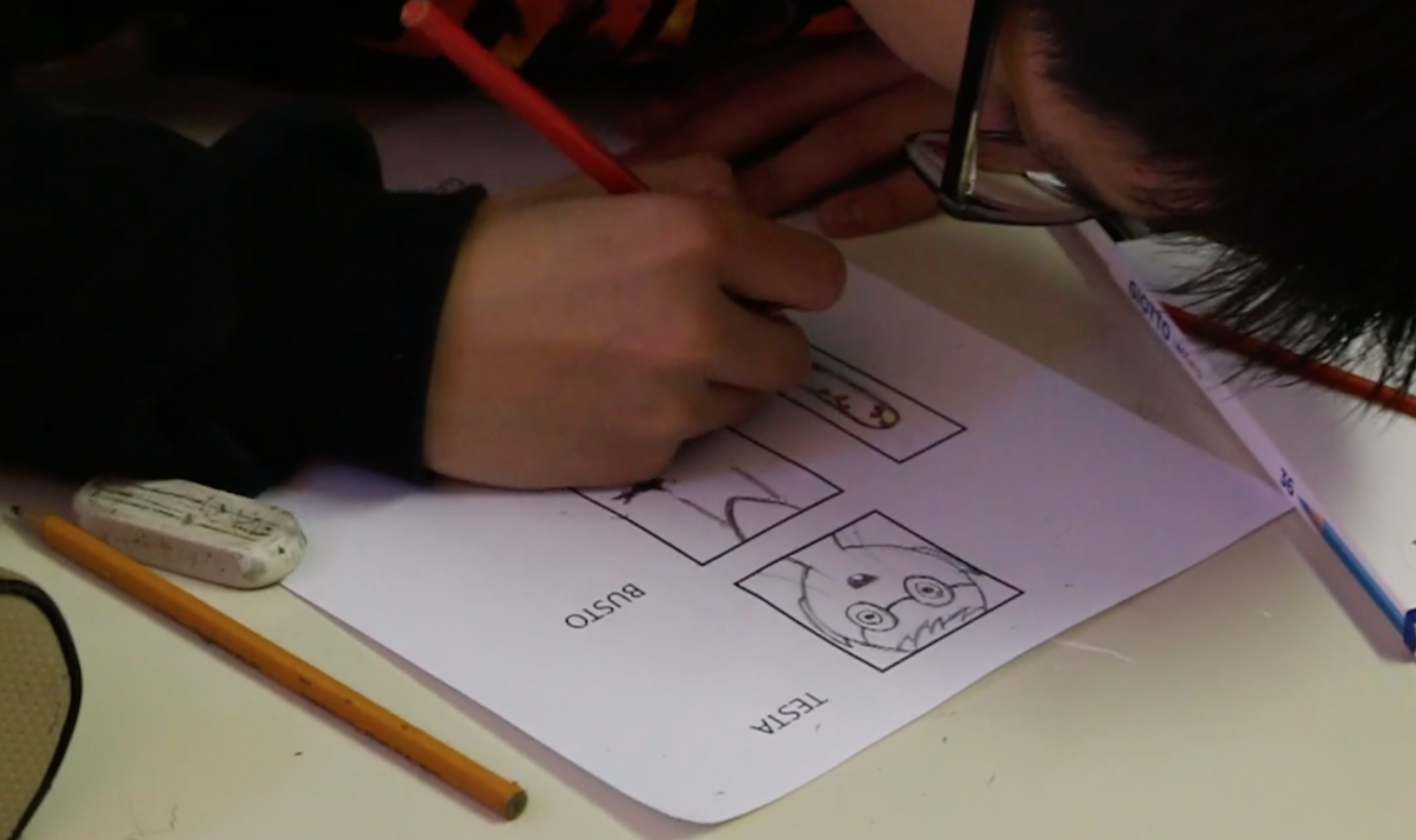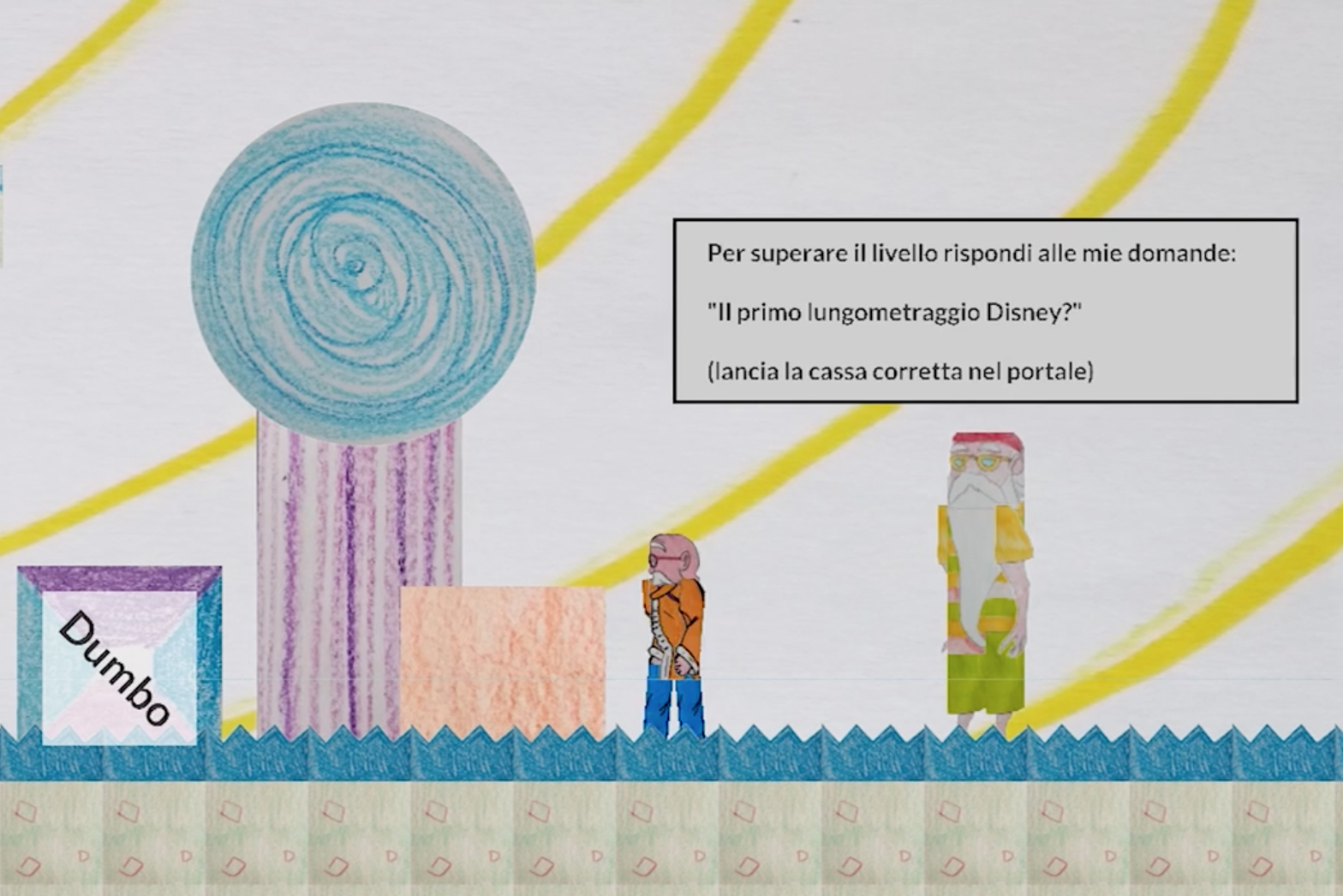Organising institution: Zaffiria
Country: Italy
Age: 11-18 years old
Key question: How many different skills do you need to create a video game?
Objectives:
- Explore students’ gaming passions to find new paths for the inclusion of students with disabilities
- Encourage teamwork and the integration of disabled students
- Give value to students’ interests, skills and creativity
- Use the video game also as a tool for verifying the school subject
Time: 6 hours
Software and apps to be used:
- Gimp,
- Audacity,
- PlatformCraft.
Brief presentation: Students work in groups and following different steps create their videogame starting from a pre-programming developed ad hoc by Zaffiria1 with the name PlatformCraft. Using some models on paper, the settings and characters of the videogame are first designed, drawn and then colored. Afterwards the elements of the videogame are digitized (using gimp or similar programs for photographic cutout), the sounds are recorded and a series of multiple choice quizzes are created, the topics of the quizzes can be linked to the curriculum disciplines. Finally, students can play together or have others play with their first craft videogame.

Topics covered:
- The video game mechanisms;
- first experimental realization of a craft video game;
- verification of school subjects;
- first approach to programming.
Civic engagement: This DA encourages teamwork recognizing the skills and difficulties of individual classmates and gives value to the possibility of reaching a goal together, keeping in mind the constraints, limits and possibilities. Technology becomes the field of experimentation of doing together, of taking part in a project whose objectives are the inclusion and construction of a cohesive group.
Preparation of space for the Atelier: Set up as many workstations as there are workgroups with colors (or material, for example, for collage) and PlatformCraft design boards. It is also necessary to set up a workstation in which to play video games, connecting the computer to a projector or interactive whiteboard.
Materials needed:
- pre-set cards (attached) to create characters and settings of the videogame,
- colors,
- projector,
- computer.

Main inspirations taken from personal research: It is possible to draw inspiration from the work of different artists and designers to create the videogame layout: from drawing, to collage, to the creation and use of timbres or natural materials to create all the elements of the video game.
Mass media and social media connections: The video game can be themed in the media education both using the series of quizzes (choosing a genre, a theme …) and coordinating the videogame on a graphic level (for example, with a fantasy theme).
How do you plan to give voice to students to present or show their personal skills and knowledge? The first phase of the DA explores consumption, knowledge and practices in the use of video games by adolescents of the class. Sharing of interests and passions, “ what do you think of videogames”, which are the favorites and for which reasons.
How do you collect information as the starting point of a Digital Atelier? In addition to a phase of collective dialogue, the “What you do not know about me” sheets have been used, with a particular attention to the graphic, to bring out the skills and knowledge.
Introducing students to the key question – the research begins: How can we create a video game together?
Experimental phase
- Action that unfolds the practical activity to clarify the question (experimental phase): A stimulating videogame is shown to gather together the main mechanisms and aspects of operation.
- Active work of the students: Students, after having understood the logic of programming, begin the creative phase and realization of their videogame.
- Presentation of findings and results (visualization of information): Each group presents its own video game proposal, the characters, the settings and the theme for the series of quizzes.
- Analysis of results: The ideas are discussed together, merging those similar, voting which go to the implementation phase.
Project/design phase – part 1
- Second action that unfolds the practical activity (project/design phase): How can we make our videogame? With which techniques?
- Active work of the students: The teacher shows different layouts to give more ideas to the students and to stimulate them towards the graphic-creative exploration. The students, still in groups, design a possible graphic style choosing colors, textures, and artistic technique.
- Presentation of findings and results (visualisation of information): Presentation of graphic proposals, one proposal for each group.
- Analysis of results: Collective final decision regarding the appearance of the future video game.
Project/design phase – part 2
- Third action that unfolds the practical activity (project/design phase): At work: how do we divide the roles?
- Active work of the students: Students are asked to deal with different aspects: creating characters, scenarios, working on quizzes, recording sounds, and digitizing materials as they are ready.
- Presentation of findings and results (visualization of information): Presentation of all the elements prepared and final verification: are the quizzes correct? Can you hear the noises well? Are the graphics interesting?
- Analysis of results: Collective discussion and approval of work: at this point the videogame can be launched and played, in the amazement of the class!

Approach to a new software or a new app: The software is first presented starting from a project already realized and proceeds, step by step, to try to deconstruct the operation so that you can then “write and design” a new video game. In this case, the “reading” phase of the videogame and the survey on how it was programmed allows the students to imagine the design scheme that they will find in the executive file.
Links between the Digital Atelier and real life of the students: Students usually like to play videogames: in this case – even if in a basic formula – students work handcrafted at all stages of production and the final product generates amazement despite its simplicity in the graphic and special effects.
How do you plan to evaluate knowledge and skills? Skills are assessed by observing how students deal with the various tasks of designing a video game: knowing how to understand a mechanism; know how to redesign it; know how to use an artistic technique in a coherent way; know how to digitize the contents; know how to record Sounds – are all real and concrete tasks that put students in the position of having to do, having to solve problems and difficulties.
Conclusion: It is possible to create a videogame together including students with disabilities.